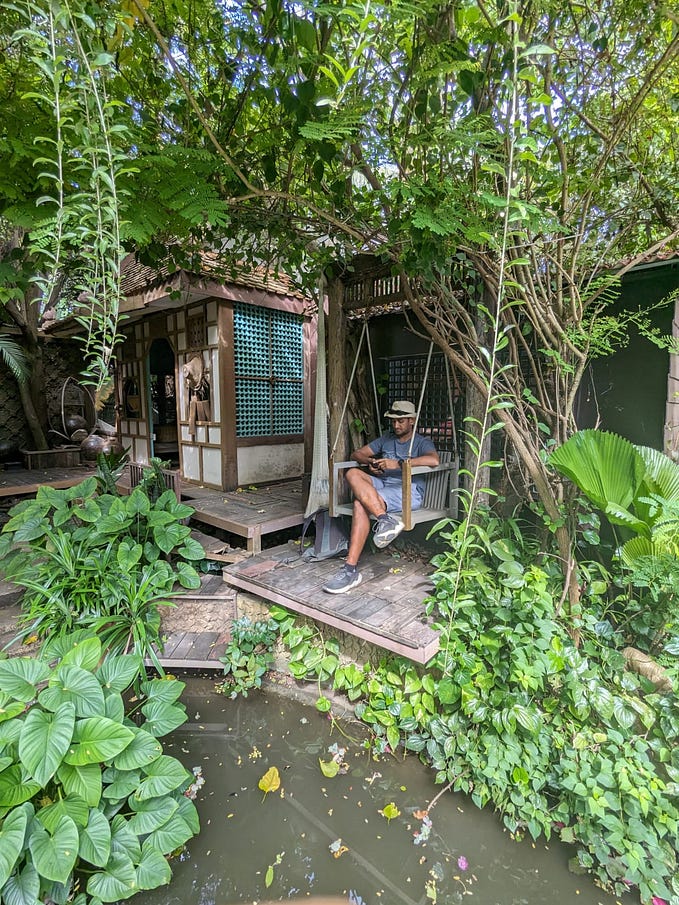Munnar, Kerala: Man Made Beauty in God’s Own Country

My ‘happy place’ is sitting on a comfortable chair, with a great book and a cup of strong, black tea preferably overlooking a vista of tea plantations in the hills. The weather is slightly cool, and the sun has just risen over a mountainside. It is a place where I feel that nature is flourishing, and I can be present in a timeless moment.

Munnar, is as close to my happy place that exists, and I was fortunate to visit recently. Munnar is located approximately 4-hours east of Kochi in the Southern Indian state of Kerala. It is self-styled as God’s Own Country, and Mother Nature herself was in fine form when she created this land.
But while this may be God’s Own Country, it is the Man-Made Beauty that brings throngs of tourists to Munnar and has etched this land into my, and many other people’s, memories. Munnar is incredible, and I highly recommend everyone visit the area to enjoy the hospitality, vistas, and tea that it has to offer. However, to imagine that the area is ‘natural’ is to do an injustice to the history (some of it quite painful) and man-made energy that has gone into the development of the tea plantations that dominate the landscape.

Up to the early 19th Century, the Munnar district was home to local tribal populations and largely disconnected from the epochal developments of the sub-continent. Then the British arrived with the East India Company, headed by John Munro. The British identified the lands as perfect for cultivating Camellia Sinensis (tea). The land was at the correct elevation, with the appropriate amount of rainfall and clay-laden soil to root geometrically planted tea bushes.
The area also had another key resource, people. Tea cultivation, even to this day, is highly labor intensive and largely conducted by women. Tea pluckers originally came from the neighbouring state of Tamil Nadu and to this day, Tamil is spoken more ubiquitously in Munnar than the state-language of Malayalam. These tea pluckers work from dawn to dusk in the fields, manually pulling the tender leaves that seek to escape to the sunlight from their parental stalks. The work is backbreaking and does not stop despite the weather conditions (such as Kerala’s famous monsoonal rains) or wild animals (such as snakes or elephants).
The development of the tea plantations cannot be viewed as purely exploitative. It also brought with it a raft of infrastructure developments including: India’s first hydro-electric plant, India’s first cable car system, railway lines and eventually by the 1930s a paved road that is still in use today to connect Munnar to urban hubs such as Kochi.
Whether the value of this infrastructural development has ‘trickled-down’ to the people is a question for which I do not have empirically proven answer. However, I was told that to this day, most tea pluckers continue to be females and earn a daily wage of approximately 500–600 Indian rupees. The tea pluckers and their families are given free accommodation, have access to primary schooling, hospitals and other public goods.
In 1947, India emerged as an independent nation and soon afterwards, ownership of the tea plantations transferred from the British to the local Tata Tea company, who rapidly expanded operations across the mountainsides of the district. Interestingly, in 2007, Tata Tea sold their majority stake and ownership of the main tea plantation. The company shifted to a co-operative structure with local people (many who were employees of the company) taking 69% ownership of the newly formed Kanan Devan Hills Plantation Company Limited.

So, I come back to my happy place; with a tea in one hand, a book in another and a vista of rolling hills covered in symmetrical tea bushes. On one hand, I do believe there is an intrinsic romanticism to the landscape that pulls even the most ardent photography-phobe to pull out their phone and snap a pic. On the other hand, we must recognize that even in God’s Own Country, Man-Made engineering and back-breaking work has had a heavy role to play in the vistas we enjoy.








